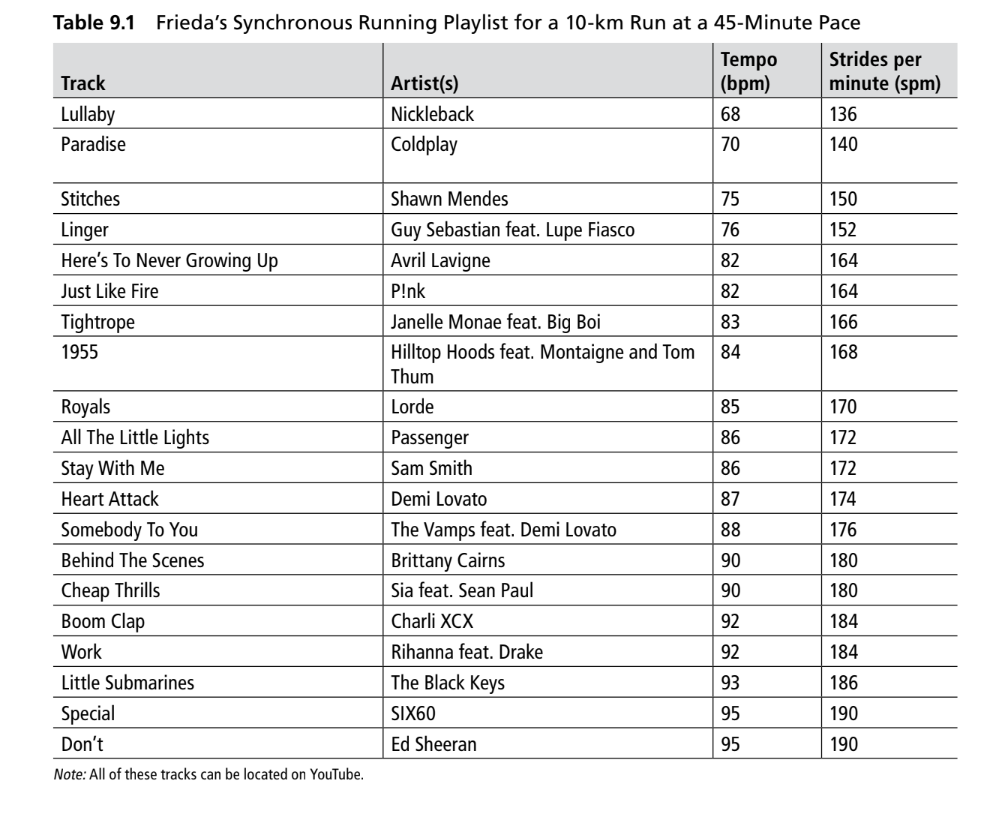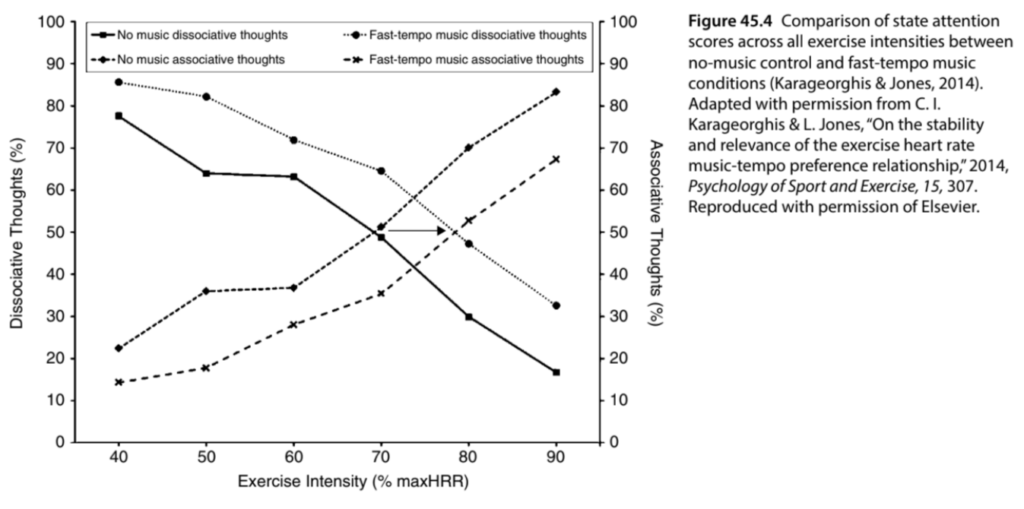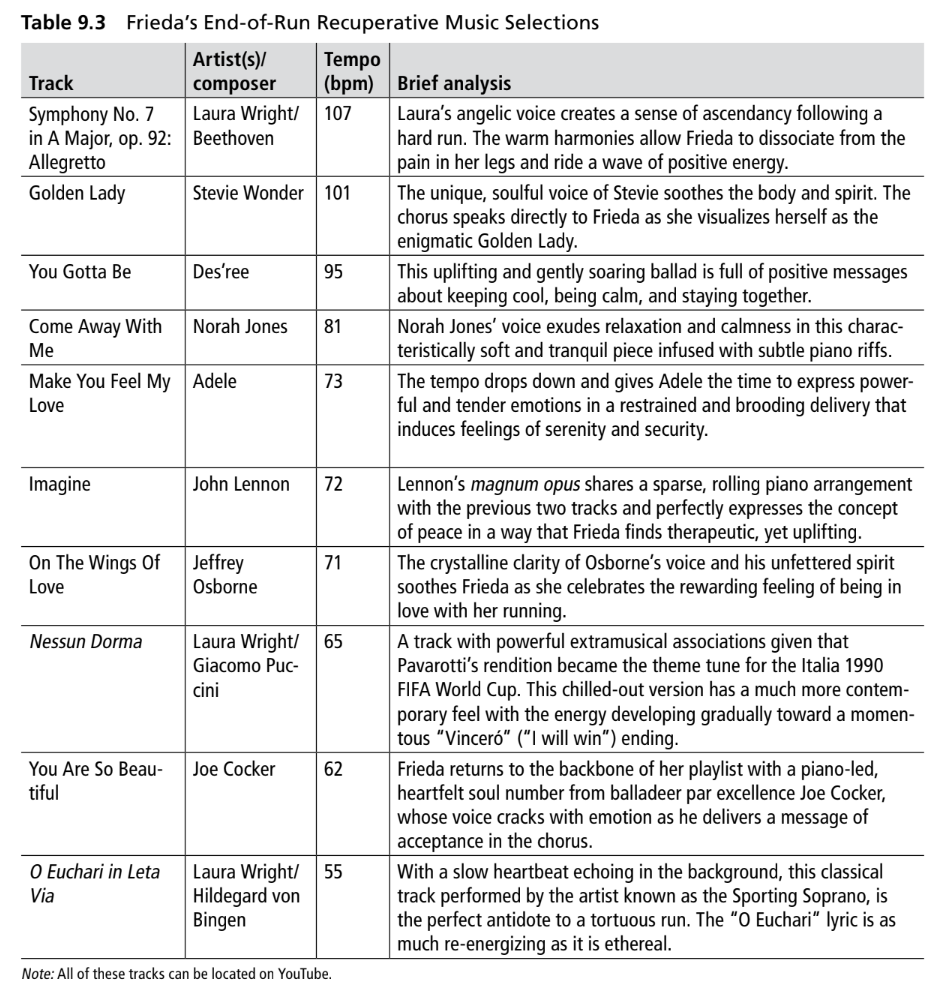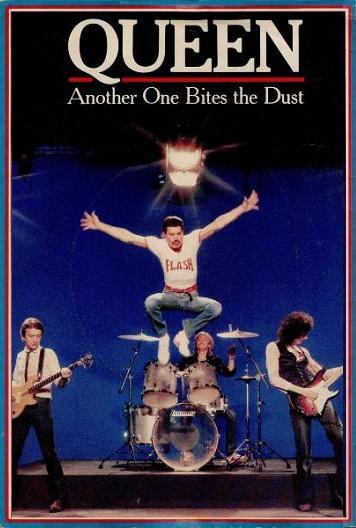How Athletes Can Use Music to Enhance Their Performance
by Will Knapke
Amid the popularization of playlists for mundane everyday activities, listening services are now overflowing with music geared towards athletes at all levels (Spotify’s “Beast Mode” playlist has almost 10 million likes): from high schoolers preparing for the Friday night lights to an Olympian gearing up to break a world record. Athletes listening to pregame music has become ubiquitous. In addition to premade playlists, anyone who has a phone can create a playlist catered to their liking. For many, including myself, this meant listening to the same 20-30 songs every game day. But are these playlists mere superstitions like wearing lucky socks? Or do they actually enhance athletic performance the way many would swear?
One of music’s greatest powers lies in its ability to be used synchronously in a workout. When deployed in this way the playlist can match various things (heart rate, strides, etc.), but for all variations the music subconsciously cues the body to move in certain ways. The most prevalent use of synchronous music comes from running. According to a study done by Costas Karageorghis, aligning the beats per minute (bpm) of a particular song with desired strides per minute (spm) lowers the metabolic cost of the movement and improves efficiency. Knowing the benefits, athletes are able to create a sequence of songs that fluctuate in bpm and therefore increase and decrease the pace of their run.

This playlist, created by an amateur runner, plays synchronously, pacing a 10-km run at 45 minutes. As you can see the songs are all over the place genre wise, but the bpm consistently increases. For this playlist to work the user multiplies the bpm by 2 and that sets their spm. Anecdotal evidence from the creator of this specific playlist suggests that she was able to decrease her 10-km time from 50 min down to the targeted 45 min within a few weeks . Anyone can make on these playlists using this type of model, the only important factor is aligning the bpm. There are thousands of songs all with the same tempo and therefore allows each individual to cater their playlist to personal preference.

The psychological effects of music are also exceptionally strong. Beyond the subconscious physical resonance, the mental distraction provided by music greatly reduces the listeners perceived effort. The right side y-axis shows the associative thoughts during exercise, those are the percentage of thoughts given towards the task at hand. The x-axis shows the intensity of the exercise. The percentage of associative thoughts present with music proves significantly lower than those without music. In the Handbook of Sport Psychology, Gershon Tennenbaum notes that he music “partially inhibits the interpretation of internal sensory cues during exercise.” This allows us to be distracted despite exerting our bodies to what would otherwise be uncomfortably levels.
The physical testing numbers also back up the mental ones. Subjects in a test done by Kelly Brooks scored significantly higher on grip strength when listening to “arousing” music as opposed to “sedative” or no music. This suggests why so many need to wait for the “right song” before attempting a new max. While they may just be doing it because they prefer a Pharrell beat over one made by Timbaland, the science backs up their seemingly superstitious actions.

As one may predict, a workout leads to high levels of adrenaline and often requires a cool down period. Just as the first playlist shown uses bpm to increase the speed at which a runner runs, playlists can also be utilized to slow down one’s body following a high intensity workout. In this case instead of matching the tempo to a stride, we match with our own heart rate. Beginning with high tempo, simulating what one may feel immediately following a workout or run, and descending until we reach 55 bpm, close to the average resting heart rate of a healthy adult. Whereas high tempo music gets us out of our regular mindset into a physically active one, slow music allows us to return back to our normal state.
The idea of mood regulation through music proves exceptionally powerful. Music at its heart elicits emotion from the listener, so it’s no secret it can be used tactfully to conjure up specific emotions for a task. Most powerful in combat and contact sports, music can be deployed to shift a listener from a sedative headspace into the aggressive and violent one required for their sport. The music boosts the ego of the athlete in a sport where they must believe they can impose their will on another human, risking injury and defeat if they cannot (Karageorghis). And while all athletes can, and most do, utilize pregame music, the unordinary mindset required for combat sports makes music all the more important.

The strength of music goes beyond the individual, properly selected songs enhance feelings of unity and teamwork. Often only a single song needs to be used to generate these feelings. Just as music was used for centuries within communities to bring people together, coaches pick a handful of songs that act as an anthem and a rallying cry for their players. The players are conditioned to react positively to the song and hearing it alerts them to be alert and ready to play. Coaches are even able to take advantage of songs mid game, just as one west coast high school football coach did. His team was losing late in the 3rd quarter and thought his players were sluggish and tired. Needing a miracle he brought a speaker and blasted Queen’s “Another One Bites the Dust”. His players showed an immediate response on the sideline and they went on to win the game in dramatic fashion.
For this coach he took advantage of one of music’s best traits, the ability to unite people. There’s nothing intrinsically motivating about Queen, other than the fact that the players loved it and it brought them closer together. Their unification propelled them to success. While it may take time for old school stubborn coaches to adopt such a practice, power lies within experiencing music together, and harnessing that power can lead to real results on the field.
The introduction of music to sports serves as another evolution of the question: what is the purpose of music? Athletes utilizing music in the ways they do gives an entirely new purpose, and that is to enhance the body. As more research goes into this new functional use for what has traditionally been entertainment, we will see more and more effort be put into optimizing playlists and songs for different workouts and sports. Our society has become obsessed with the idea of self-optimization, that is optimizing everything in one’s life, and music seems to be another facet in that obsession.
There is no foreseeable future where both amateur and professional athletes stop using music. The psychological and physiological benefits are astounding and allow for competitors to gain the small edges that so often decide competitions. Whether deployed pregame to summon up the right mindset, or to meticulously pace a workout to match with songs, music may very well be a key to unlocking the potential of the human body.